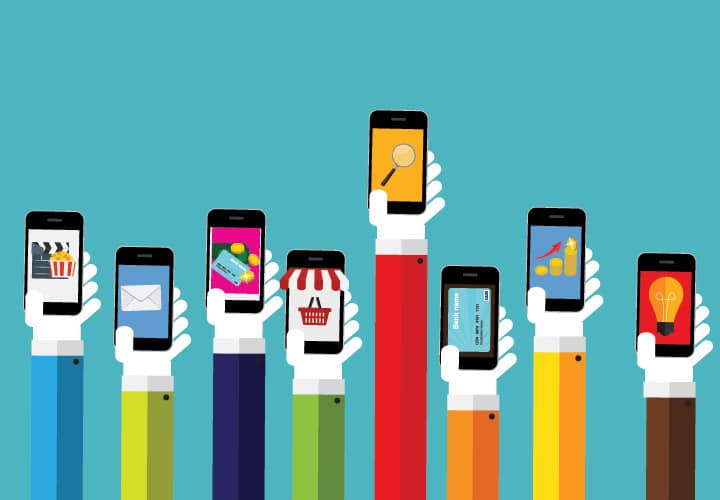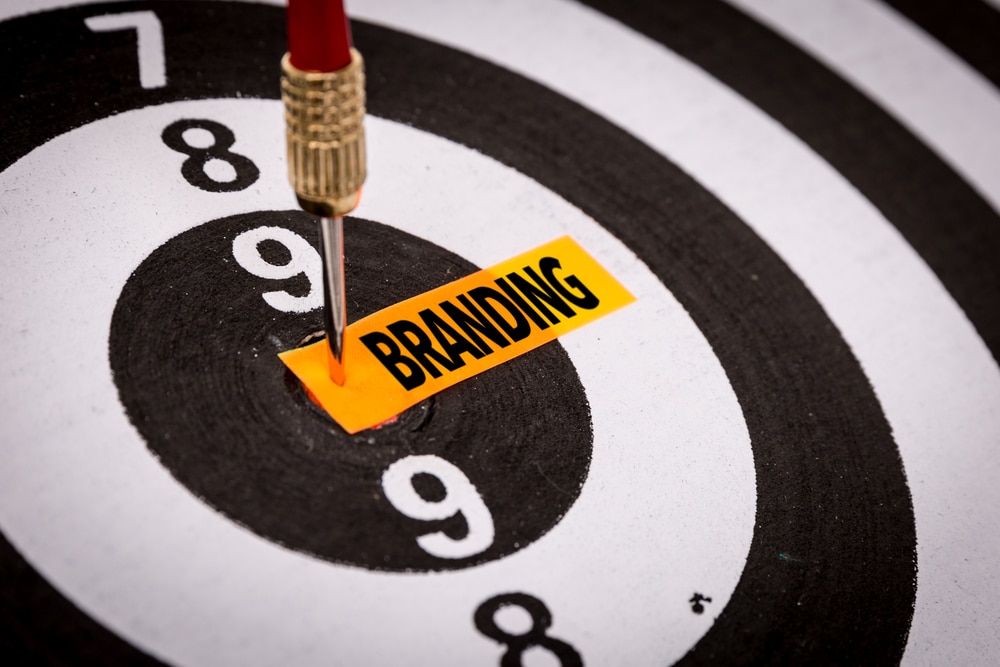While acquiring new business is important, holding onto existing customers should take precedence. Continue reading “4 ways to improve the in-store customer experience to boost shopper retention”
Category: b2b
The top 5 most effective advertising techniques

The top 5 most effective advertising techniques
Technology provides brands with several opportunities to create messages that resonate with consumers. Mobile video, in-store apps, programmatic marketing, and emerging platforms offer ways to target the right individuals as they’re in a purchase mindset and drive them to specific products in the store. These five effective marketing techniques help brands connect with consumers in ways that increase interest and drive sales.
#1: Branded Storytelling on Social Media
Creating a compelling narrative for a campaign can help humanize a brand, and keep it top-of-mind for consumers when it comes time to shop. Like in any story, these campaigns need characters, a plotline, and a satisfying ending to keep consumers intrigued with the premise. Most importantly, these stories need an emotional component that drives affinity.
Purina provides an excellent example of the effectiveness of branded storytelling with their Service Dog Salute, in which they set a goal to raise $500,000 to support Tony La Russa’s Animal Rescue Foundation. To engage consumers, Purina provided a price matching option to donate a portion of the proceeds from the sale of various products.
#2: Programmatic Marketing Through the Internet
Programmatic marketing is an absolute must for any marketer that wants to keep pace with the rapidly moving digital landscape. Most marketers recognize this trend, as it’s estimated that programmatic ad spend will reach $69 billion by 2020, and these purchases will account for over 90% of the digital ad spend category. Marketers choose programmatic because it offers a wide range of benefits, including:
Mass marketing access:
Google gets an estimated 40,000 searches per second, which presents a lot of potential for ad buys. Whether brands are paying to be in the sponsored section of the search results or gaining real estate in the sidebar of a popular website, these numbers are promising. Through programmatic marketing, brands can reach millions of consumers with a single search.
Targeting potential:
Programmatic marketing offers the opportunity to pick and choose who sees certain ads, meaning that brands can control the delivery of the message to ensure that it’s viewed by the most engaged audiences. Marketers can break the delivery down by categories such as gender, interest, and socioeconomic status to ensure they only reach those most likely to purchase their products.
Streamlined ad buying and tracking:
Prior to programmatic marketing, marketers had to request proposals, negotiate prices, and manually insert advertisements. All of this took time and money. Additionally, they had to follow up to ensure there was a reasonable ROI on their purchases, and that they didn’t waste money on the wrong platforms. With today’s tools, marketers can manage their payments and automatically purchase ads based on digital bidding options. They can also access at-a-glance reviews of ROI and monitor for issues like ad fraud in reporting.
#3: In-Store Marketing via Mobile Apps
One of the most effective advertising techniques is in-store marketing that encourages consumers to engage with products. With a mobile shopping app, like Shopkick, consumers are incentivized to scan product UPCs in exchange for rewards points (or kicks). This drives shoppers to seek out products at-shelf, which significantly increases purchase potential.
#4: Partnering With Emerging Voice Platforms
The voice ordering market is expected to reach $40 billion in sales value by 2022, meaning now is a wise time to optimize product listings for audio content. Smart speakers are the primary drivers of this use, but other wearables like smartwatches or even smart appliances will likely play key roles in the growth of this market.
Brands should look to the providers of voice platforms to enhance their marketing potential before these platforms become saturated. Increasing brand awareness and reputation on voice search platforms is crucial, as product reviews will drive the search results in these mediums. Some brands have even chosen to roll out voice-centric apps to increase recognition in this space.
#5: Co-branding to Reach Larger Audiences
Some products naturally complement each other. Whether it’s chips and salsa, shampoo and conditioner, or sports games and beer, there’s a natural segue that brands should take advantage of. Cross promotions may involve teaming two of a brand’s existing products together, or even crossing paradigms and working with an entirely new partner. An example of this strategy can be seen in Budweiser’s partnership with the Cleveland Cavaliers basketball team.
In-House Creation or Partnerships for the Most Effective Advertising Techniques
When leveraging the most effective advertising techniques for CPG brands, a mix of in-house development and digital partnerships will be critical. Brands should consider what they’re willing to develop on their own, and then use strategic mobile app partnerships to fill the gap.
At the same time, Target also participates in third-party rewards programs to reach consumers who might not use the brands other services. This relationship is reciprocal, as the rewards program encourages consumers to visit Target, both through rewards they get for walking through the door, and gift cards they can earn by gathering kicks. The partnership also creates a virtual greeting that encourages users of the app to visit the store.
The most effective advertising techniques leverage both available and emerging options in technology to improve the customer experience. Brands can provide consumers with rewards, reach larger audiences, and improve their branded experience overall by leveraging mobile marketing. There are many effective advertising techniques brands can use to gain market share, but these five represent the best to implement with the highest potential ROI.
Find out what it takes to develop a successful marketing strategy for your brand

As a brand, your marketing strategy is your long-term plan for success. Continue reading “Find out what it takes to develop a successful marketing strategy for your brand”
Learn how personalized marketing can boost customer loyalty and improve sales

While many consumers prefer privacy, they also want to do business with companies that understand them. Continue reading “Learn how personalized marketing can boost customer loyalty and improve sales”
Next best action marketing: How to leverage consumer data to offer relevant products and services

Brands are quickly learning that next best action marketing is one of the most effective ways to leverage consumer data. Continue reading “Next best action marketing: How to leverage consumer data to offer relevant products and services”
5 customer loyalty program ideas that build brand affinity

The best customer loyalty program ideas extend beyond a customer’s superficial reasons for preferring a brand and get down to the heart of the matter. Continue reading “5 customer loyalty program ideas that build brand affinity”
Within reach: The ultimate guide to mobile proximity marketing for retailers

Within reach: The ultimate guide to mobile proximity marketing for retailers
Most major retailers already use some form of proximity marketing, whether they’re offering notifications leading to rewards through beacon-based technology or the ability to interact with RFID embedded-chip displays. Regardless of the bespoke tools and desired outcome, using a combination of mobile proximity marketing strategies sets retailers up for the best results through flexibility in when they can reach at the right place and right time. It helps regardless of whether retailers want to guide consumers to specific products, better understand buying behaviors, or maximize their sales and so forth.
Types of Mobile Proximity Marketing Systems
Mobile proximity marketing is a very general term that can refer to many different strategies. The type of technology involved, messages sent, and other features can also vary. Here is a breakdown of the four types of mobile proximity marketing systems that brands may choose to leverage.
| Type | Pros | Cons |
| Bluetooth
The system requires a Bluetooth broadcaster, as well as a cell phone with Bluetooth enabled to transmit content, data, and images. |
|
|
| Near Field Communication
NFC uses RFID chip embedded tags to enable communications between the tag and the devices that come in very close proximity with it. NFC’s most common use is in simplifying payments for the consumer, but can work with marketing as well. |
|
|
| WiFi
WiFi-based systems are very similar to Bluetooth systems, in how messages are transmitted and received. But that information travels over general WiFi, rather than relying on low-energy Bluetooth. |
|
|
| Geofencing
This system allows messages to reach users in a specific, geographical area. |
|
|
Retailers rarely choose one single form of mobile proximity marketing. In most cases, they leverage several, and many of these systems complement each other well.
Best Practices in Mobile Proximity Marketing
Mobile proximity marketing is powerful because it allows brands to reach consumers during crucial shopping moments. It can also reinforce brand affinity and prime consumers for sale throughout their purchase journey. When embarking on a mobile marketing campaign, retailers and brands should:
Be specific
Mobile proximity marketing is designed to drive interest in products based on their availability nearby. As such, messages should center on deals available by location or on certain items, rather than just standard marketing messages. Generic marketing messages are less impactful as they don’t encourage a consumer to take a specific action, which is a crucial part of mobile marketing. It’s also important to know how often to send messages. You don’t want to bombard consumers with too many messages—one or two, here and there, is just enough.
Gamify the program
Gamification—or the process of turning a mundane event into a fun activity—is a great method for driving engagement with products. Allowing consumers to use their phones to discover the hidden features of an advertisement or seek out products in the store can increase the likelihood that they will continue to use the app. This means brands can gain more attention for their advertising as well as a longer retention rate for the app.
Incentivize interaction
A major part of gamification is the reward for participation. There must be something that marks the consumer’s accomplishment as they participate. This is where mobile reward programs can provide an opportunity. Consumers in these programs can collect points that they can save and redeem for branded merchandise, gift cards, and more. These incentives provide the added benefit of creating a sense of product value without the need to offer a discount.
Leverage mobile video
Mobile video is the most engaging medium for shoppers. Users of mobile are three times more likely to view a video when shopping than desktop or laptop users. Brands should look to incorporate video which can be viewed seamlessly within an app, or in other words, vertical video. Video in this format allows consumers to view video content without changing their phone’s position, making it ideal while consumers are shopping or on-the-go.
Use multiple programs
As many mobile proximity marketing campaigns require user permission, it’s critical that retailers and brands take advantage of as many as possible. A mobile phone user may have their Bluetooth disabled, but are still likely to have their WiFi enabled. By using multiple proximity-based strategies, brands can gain the attention of a larger audience.
Of course, brands can only enjoy these benefits if they choose to partner with the right mobile app providers. That means reviewing a few key metrics and options of all available programs to garner the best results.
Selecting a Mobile Proximity Marketing Partner
Retailers and brands have the option to create proprietary apps. However, there are limitations to these features, one being the audience. If a consumer is already following a retailer or brand, it’s likely because they’re already loyal. While rewarding pre-existing loyalty is wise, it doesn’t serve to grow the brand or retailer’s audience. Companies must supplement their proprietary programs with third-party app providers to reach new users.
Third-party app providers help companies reach new audiences who may not have considered their products before. They also take the expense out of a mobile app program as these providers handle the development, app retention, marketing, and innovations that drive consumer use. Before partnering with a third-party app, brands should take into account the app provider’s:
Reputation:
Companies will share the reputation of any app provider with whom they partner. As a result, they must ensure the reputation of these apps is above reproach, in that they use consumer information fairly and correctly and provide strong security.
Active users:
Companies may focus on apps with a high number of downloads as well as retention rates, but often, consumers will download an app never to use it again. Active user metrics allow companies to better understand how much activity that app gains from its user base.
Features:
Companies should partner with apps that offer features consumers want the most. The ability to gain rewards and enjoy exclusive content are major drivers of an app’s success. Also, features like rewarded video—where consumers receive an incentive for viewing content to the end—appeals to consumers as it allows them to gain something in exchange for a minimal time investment.
Prior campaign success:
App providers should be able to show a history of success for brands within a niche. They should offer clear figures relating to return on investment, sales lift, and market share growth as just a few examples. Metrics of prior campaigns allow brands to see the kind of results they can expect from a mobile app campaign with that provider.
User demographics:
Brands and retailers want to be able to reach household decision-makers, but they also want those decision-makers to be the prime audience for their products. Partnering with an app with a diverse mix of users allows brands to target the best possible sales prospects to create a successful campaign.
Retailers and brands should consider offering their own mobile proximity marketing programs, but also supplement those programs with third-party apps that provide additional features. This strategy allows brands to provide the widest range of services while engaging a broad audience of consumers in the shopping aisle.
How to increase brand recognition: 3 tips and tricks

The best strategies for increasing brand recognition center on approaching consumers as individuals. Continue reading “How to increase brand recognition: 3 tips and tricks”
Machine learning in retail: How brands are leveraging this technology to personalize messages

By leveraging machine learning in retail, brands will possess the ability to enhance every part of the sales process, from supply chain management to consumer marketing and purchasing. Continue reading “Machine learning in retail: How brands are leveraging this technology to personalize messages”
How to reach customers effectively in a crowded market

CPG brands face many challenges in determining how to reach customers effectively. Continue reading “How to reach customers effectively in a crowded market”
3 innovative ways to communicate with customers

Finding innovative ways to communicate with customers is essential these days, as the way consumers shop has changed so much. Continue reading “3 innovative ways to communicate with customers”
5 best practices for brand storytelling on social media

5 best practices for brand storytelling on social media
Brand storytelling does not have to be limited to social media. Brands can leverage this strategy through both proprietary and third-party apps by creating shorter, easily digestible content. This content can speak to consumers as they’re in the shopping aisle and improve the likelihood of future sales. Whether your brand is telling its story on social media or through a mobile app the benefits are numerous, and brands can enjoy them by adhering to some standard best practices.
How Brand Storytelling on Social Media Creates Meaningful Connections
Brand storytelling isn’t just about making sales. It’s about aligning a brand with its target market. The kind of top-of-mind awareness that CPG brands need to succeed isn’t possible without establishing an emotional connection that drives consumer loyalty.
Brand storytelling is the process of turning standard marketing into an engaging narrative. CoverGirl’s tagline shift from “Easy, Breezy, Beautiful” to “I Am What I Make Up” is an example of moving away from product-focused advertising to brand storytelling.
“I Am What I Make Up,” on the other hand, is a very literal approach to brand storytelling. Rather than treating the model wearing the makeup as a prop, the brand allowed the personalities of their models to shine through. During the brand’s spots, their models—who range in age, ethnicity, and gender—discuss their personal stories, as well as why they wear makeup. The overall focus is on self-expression, rather than fitting in with a traditional definition of beauty which helps the brand’s message resonate with consumers.
The clear benefit of brand storytelling is the emotional connection it creates with consumers. These consumers are more willing to become brand ambassadors on social media, which can increase future sales and improve customer loyalty for the long term. Of course, that’s not to say that brand storytelling on social media is effortless. Brands must consider ways they can gain consumer buy-in for their message while maintaining a genuine and transparent persona. All best practices for this type of advertising should center on that.
#1: Let Consumers Drive the Message
One of the essential parts of establishing a brand storytelling campaign on social media is to listen to what is important to consumers. Brands may often find they already have brand equity behind their products which they can leverage online by doing a deep dive of available information. This was a strategy Kellogg’s used when they rolled out a new, and highly successful, campaign for Pringles.
One of the first steps Kellogg’s took in designing the campaign was performing a “digital audit” with the assistance of Google. The brand searched out mentions of their product across digital platforms and found a unique trend of consumers combining multiple flavors to create new ones. They built their campaign off this “Stackable” concept, even using it in their Super Bowl commercial.
#2: Focus on the Emotional Response
Storytelling doesn’t work without emotional investment. These narratives must include a component that intrigues consumers and encourages them to watch through to the end of an ad. Some brands advertise using humor, while others focus on nostalgia and sentimentality. As long as there is a human connection to the story, brands can keep consumers engaged.
If there is any brand that knows how to manage emotions in advertising, it’s Purina. The brand is excellent at using their target market’s connection to pets to get them invested in their brand storytelling on social media. The company leveraged this in a recent charitable contribution drive, Service Dog Salute, to help raise money for Tony La Russa’s Animal Rescue Foundation (ARF).
#3: Stay True to the Product
When trying to create a branded story, brands may focus a bit too much on the narrative and forget to highlight the product. Such marketing may not connect with consumers in a way that makes sense for the brand. Even the best brands can make missteps when storytelling doesn’t fit the product.
#4: Monitor Key Metrics and Update As Needed
Brands must monitor metrics during their campaigns to ensure they’re able to change direction if it’s not performing. Sales lift isn’t the only metric worth focusing on. Here are a few metrics brands need to consider when using brand storytelling on social media.
Click-through rate (CTR):
The CTR offers base engagement rates, as these are the individuals who choose to view the ad on a given platform. It can also show how traffic filters into a website, which provides the marketer with an understanding of their most important channels.
View-through rate (VTR):
The VTR takes the CTR a bit deeper, by showing the individuals who viewed content all the way through. VTRs for advertisements are typically higher when the video is shorter as consumers often have the option to skip longer ads.
Engagement rates:
Likes, comments, and hashtag mentions are a valuable resource for seeing exactly how an ad is coming across to viewers. More than a few brands have been able to pivot their campaigns thanks to early information obtained through social media engagement.
User activity:
User activity is less about content and more about strict numbers. It can help brands discover when they can get the most engagement from ads. It can also help them track down issues with ad fraud. For example, a brand noticing a high number of clickthroughs during times when their audience wouldn’t likely be active, like after midnight on a weeknight, can be a clear indication of useless bot traffic used to inflate CTRs.
Incremental sales lift:
Sales explicitly related to the marketing message compared to standard base sales are much easier to gauge now than they used to be. Before the internet, brands had to compare prior period sales to current sales to determine which were attributed to marketing. However, mobile apps and websites offer brands the ability to watch how marketing converts to sales in real time, as the user is trackable from the moment they view the promotion until they make the purchase.
#5: Leverage Multiple Platforms and Mediums to Spread the Message
Brand storytelling shouldn’t just be limited to social platforms. Brands can take the message even further, gain valuable data, and better understand audience responses by working with third-party app providers to share small snippets of campaigns.
There are many opportunities to be leveraged in brand storytelling on social media, provided brands create content that establishes an emotional bond with consumers. These campaigns build brand affinity rather than only offering immediate sales. By adhering to some best practices for providing genuine and engaging content, brands can increase loyalty, and over time, their market share.

